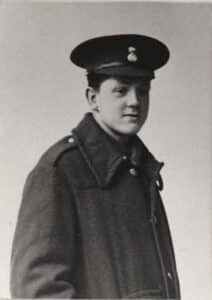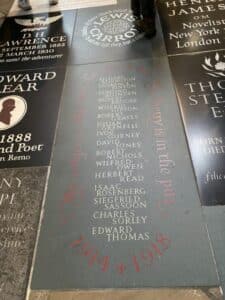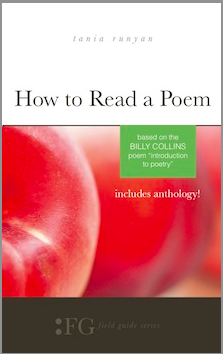
“In Parenthesis” by David Jones is a Modernist classic
Asked to name the great Modernist poets and writers, I might say T.S. Eliot, James Joyce, Ezra Pound, and William Butler Yeats. The name of David Jones (1895-1974) would not come to mind. My Norton Anthology of English Literature, which I read to near shreds in college, makes no mention of him. But Jones deserves to be better known.

David Jones in WWI
Jones was known for his poetry and his engravings and paintings. He worked as a graphic artist; poetry and art don’t usually pay the bills. He was a veteran of World War I, and he’s increasingly recognized as one of the leading “World War I poets.” From 1915 to 1918, he served with the Royal Welsh Fusiliers on the Western Front, and unlike many of his poetic contemporaries, he survived. The poets who didn’t survive the Great War tend to be better known and more celebrated than those who did. Jones himself served in the army longer than any other British writer.
Jones waited 20 years to publish his poetic work on the war, In Parenthesis. To read it is to discover a Modernist masterpiece every bit as astonishing as The Love Song of J. Alfred Prufrock or The Waste Land. The book-length poem was published by Faber & Faber, and Eliot served as the editor. In his introduction to the work, Eliot sounds almost giddy in his praise, calling it, among other things, “a work of genius.”

During one operation, Ball and his company are on the move. The battle is underway, and they’re alternately inching forward and throwing themselves in the dirt. Above the sound of artillery explosions, Ball hears the birds chattering away, countering “the malice of the engines”:
“But he made them [the birds] a little lower than the angels and their inventions are according to right reason even if you don’t approve the end to which they proceed; so that there was rectitude even in this, which the mind perceived at the moment of weakest flesh and all the world shrunken to a point of fear that has affinity I suppose, to that state of deprivation predicate of souls forfeit of their final end, who nevertheless know a good thing when they see it.”
Now imagine a book-length poetic work like this. It is simply extraordinary. Poets like Eliot, W.H. Auden, and Yeats publicly sang its praises, and the critics agreed, one calling it “the greatest literary work on war in England.”

The memorial stone for the WWI poets in Westminster Abbey
Jones was born in Kent, England, in 1895. His mother was English and his father Welsh, and Jones would eventually identify more strongly with Wales. At 14, Jones entered the Camberwell Art School, where he studied art and literature. After serving in the war, he returned to his art studies and also worked as an engraver. He began working on In Parenthesis in 1928, finally publishing it in 1937.
His artwork was recognized and shown at the Tate, various world fairs, and even in its own touring exhibition. Another long poem, The Anathemata, was published in 1952, and Jones wrote a considerable number of essays on art, history, religion, and literature. He’s often best remembered for his engravings for numerous works of literature. He died in 1974 in a nursing home in Harrow, England, after suffering injuries from a fall.
It’s appropriate that his name was included in the list of World War I poets honored by a memorial stone in Westminster Abbey in 1985. While he wrote only a single work on the war, it is equivalent to or greater than the work of his fellow poets. And In Parenthesis is one of the great works of English literature.
Related:
Meeting David Jones at the Laundromat – Liv Ross at New Verse Review
Photo by Martin Fisch, Creative Commons, via Flickr. Post by Glynn Young.
How to Read a Poem uses images like the mouse, the hive, the switch (from the Billy Collins poem)—to guide readers into new ways of understanding poems. Anthology included.
“I require all our incoming poetry students—in the MFA I direct—to buy and read this book.”
—Jeanetta Calhoun Mish
- Poet Sidney Lanier and the Lost Cause - October 2, 2025
- Poets and Poems: A.J. Thibault and “We Lack a Word” - September 30, 2025
- Poets and Poems: Catherine Strisik and “Goat, Goddess, Moon” - September 25, 2025

Leave a Reply